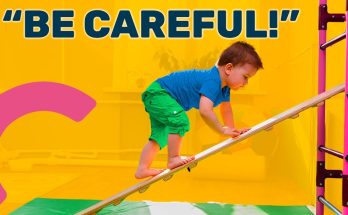One of the most challenging parts of parenting, especially in the early stages, is getting your baby to sleep. Sleep is vital for both the baby and parents, and the lack of it can create stress for everyone involved. Enter “The Baby Whisperer” — Tracy Hogg, a renowned British nurse and baby care expert, who authored the famous book The Baby Whisperer Solves All Your Problems. Tracy Hogg’s sleep techniques, often referred to as “The Baby Whisperer Method,” provide a structured yet gentle approach to helping babies sleep, and her methods are highly regarded by parents and caregivers alike.
Hogg’s approach to baby sleep is not about forcing babies to sleep through the night immediately but rather about creating a calm and structured environment that encourages healthy sleep habits. Her techniques focus on understanding your baby’s cues, creating a predictable routine, and fostering a sense of security and comfort. Below, we will delve into how “The Baby Whisperer” suggests putting your baby to sleep.
1. Understanding Your Baby’s Cues
The first step in “The Baby Whisperer” method is learning to interpret your baby’s cues. Every baby has their own set of signals when they’re tired or ready for bed. By understanding these signals, you can prevent overtiredness, which can make sleep more difficult for babies. Common tired cues include rubbing eyes, yawning, looking away, and becoming fussy or irritable.
Instead of waiting until your baby is screaming or overtired, which can make it more difficult for them to settle down, Hogg encourages parents to respond at the first signs of sleepiness. Responding early helps babies fall asleep more easily and encourages them to develop healthier sleep patterns.
2. Establishing a Consistent Routine
A key part of the Baby Whisperer Method is consistency. Babies thrive on routine, and by setting a predictable pattern for daily activities, including naps and bedtime, babies feel secure and know what to expect.
Create a calm and predictable bedtime routine that signals to your baby that it’s time to wind down. This can include activities like a warm bath, reading a book, or gentle rocking. Avoid stimulating activities close to bedtime, as they may keep your baby from relaxing. A consistent pre-sleep routine helps your baby understand that it’s time for rest, making it easier for them to fall asleep.
Hogg emphasizes that the bedtime routine should be short and soothing, lasting about 15-20 minutes. The goal is to help your baby transition from wakefulness to sleep without getting overstimulated.
3. The “E.A.S.Y.” Routine
One of the cornerstones of “The Baby Whisperer” method is the E.A.S.Y. routine. The acronym stands for Eat, Activity, Sleep, and You. It’s a structured daily schedule that ensures babies have their basic needs met in a balanced way while helping parents establish healthy sleep habits.
- Eat: Start with a feeding, whether breastfeeding or bottle-feeding.
- Activity: After feeding, engage in a short activity such as tummy time or playing.
- Sleep: After activity, put your baby down for a nap or bedtime.
- You: This is the time for parents to have some personal time, rest, or take care of other tasks.
The idea is to allow your baby to go through each stage in order, without skipping or overloading any one section. The E.A.S.Y. routine helps to create a predictable flow of events that helps babies know when it’s time for sleep.
4. The “Pick Up/Put Down” Method
Hogg’s “Pick Up/Put Down” method is a technique for soothing babies to sleep, especially useful for babies who are still learning how to self-soothe. This method is especially helpful for babies who may cry or resist being put down to sleep but still require comfort from their parents.
Here’s how the “Pick Up/Put Down” method works:
- When your baby starts to cry after being put down to bed, pick them up gently to offer comfort.
- Once your baby has calmed down, put them back into their crib. The goal is for your baby to learn to self-soothe but with your support during the process.
- Repeat this process as many times as necessary until your baby falls asleep. Over time, your baby will start to associate their crib with comfort and safety, and the need for picking up and putting down will decrease.
This method is gentle because it doesn’t involve letting your baby cry it out but still teaches them to fall asleep on their own over time. It’s a gradual approach that helps babies build confidence in their ability to sleep independently.
5. Creating a Calm Sleep Environment
Hogg stresses the importance of a calm and conducive sleep environment. This includes a quiet, dark room with minimal distractions. You can use a white noise machine to mask household sounds and provide a soothing environment. Make sure the room temperature is comfortable — not too hot or cold — and that your baby is dressed in comfortable, weather-appropriate clothing.
Another important factor is the baby’s sleep surface. Hogg recommends using a firm mattress and avoiding overly soft items like pillows or stuffed animals in the crib to ensure your baby’s safety while they sleep.
6. Avoiding Overtiredness
Overtiredness can make it harder for babies to fall asleep. Hogg recommends following your baby’s natural rhythm and getting them to bed before they reach the point of exhaustion. This may mean putting your baby to sleep earlier in the evening or adjusting the timing of naps throughout the day. The key is to avoid letting your baby become too overstimulated or overtired, which can lead to a more difficult bedtime experience.
7. Be Patient and Flexible
While structure is essential, Hogg also emphasizes that parents need to be flexible. Babies go through phases, and their sleep patterns may change frequently as they grow. It’s important not to become discouraged if things don’t go perfectly according to plan. Some nights your baby may sleep longer, and some nights they may need more comfort.
Patience is key in implementing the Baby Whisperer method, as it encourages a steady, gentle approach to developing good sleep habits that will last long-term.
Conclusion
Getting your baby to sleep is a journey, and Tracy Hogg’s Baby Whisperer methods provide a calm and structured way to help your baby (and you) get the rest needed. By understanding your baby’s cues, establishing a consistent routine, and using gentle techniques like the “Pick Up/Put Down” method, you can encourage your baby to develop healthy sleep patterns. Though it may take time, the goal is to create a loving and supportive environment where your baby can rest peacefully and grow.



